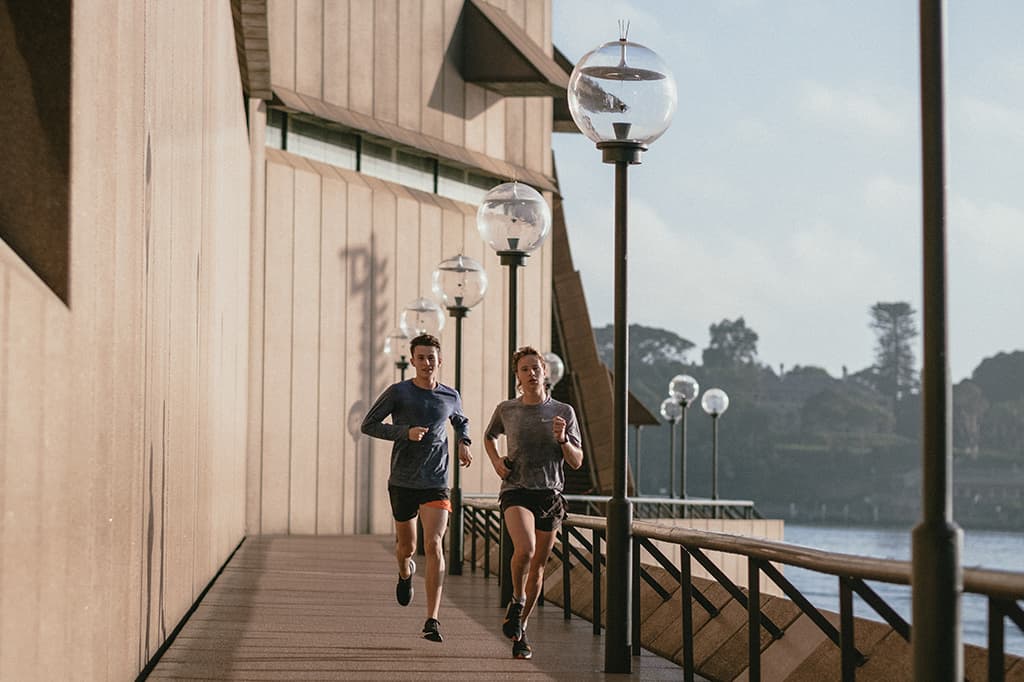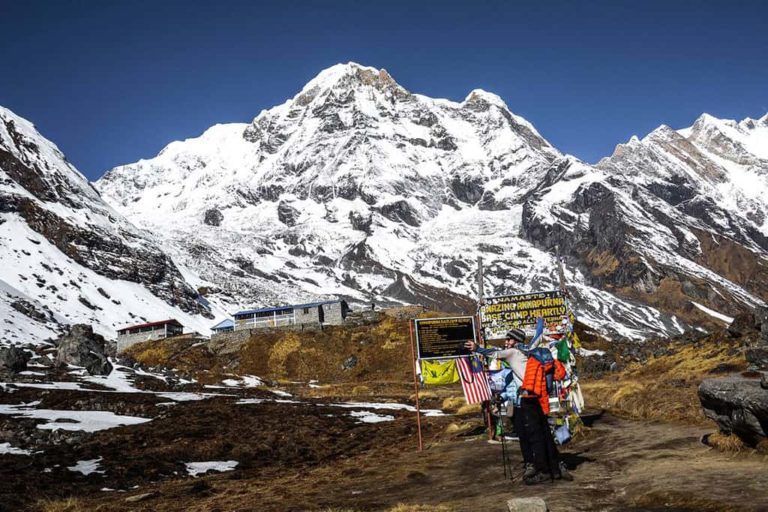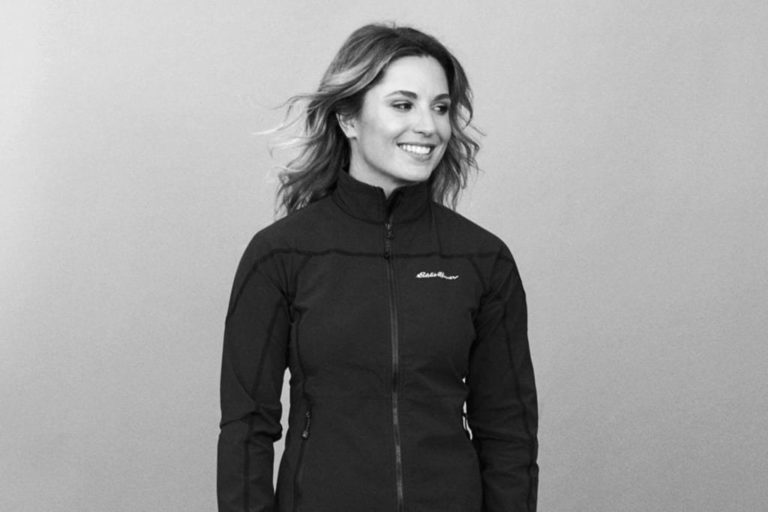How to Get in Shape for Trekking
Before we learn about how to get in shape for trekking let us understand what is trekking. Trekking is an activity involving going on a long journey on foot. Trekking is a great way to see the beauty of a place and people.
Trekking is also beneficial to health, read the benefits of trekking to know more
Every destination has its specialties. Some trekking destinations are easy, while others are challenging. As a trekker, you need to be in great shape to commence your adventure and successfully complete it without any injury.
You may have previous hiking experience, but it does not mean that you can just slide down the sofa, put on your hiking shoes, and hit the trails after a long gap.
Be it a trek up to Everest Base Camp or a long hike to the Appalachian trail, having a level of fitness and getting into shape is a must.
Below are some tips on how to get in shape for trekking.
(Note: All tips and workouts are directed towards healthy individuals. If you have any medical conditions, then consult a doctor before trying any of these exercises)
1. Start Training Early
Depending on how long and intense your trek will be, give yourself at least a month or two to prepare for the trek. It is never too early to get started on your training because it will only make you stronger and fitter.
Training early gives your body time to adapt to the obstacles that you will be facing soon. Taking this precaution will prevent you from injuring yourself due to excessive activity too soon.
In your starting phases, you do not need to train rigorously. You can just go for a walk or go jogging around your neighborhood. You can aim for the miles you want to cover and gradually increase your mileage that matches your long-distance trek.
2. Walk Training
Walking training is an essential factor of your training program. Yes, you can walk around the neighborhood in the first phases.
You can combine your training days with rest days, then as your fitness improves, go for shorter hikes or day hikes.
Go on a day hike as it is the best way to get the gist of trekking. Hiking lets your body know what it will go through while getting you in shape. After a week or two, go for extended, multi-day hikes and slowly on more challenging landscapes. Try to go on walks at a similar terrain as your trekking destination.
Walk training using your backpack
Without a doubt, you will be carrying a backpack full of essentials like food, water, clothing, and more. Having the right backpack is essential to stay in good shape throughout the trek.
Choose a backpack with adjustable straps on the chest and waist to adjust your back correctly. External compression straps are also an important part; it helps the load not to shift.
As soon as you get your backpack, practice carrying a similar weight to the load you would be carrying while trekking to get used to the backpack’s weight and position. Your back will thank you.
Walking training wearing your trekking footwear (Shoes/Socks)
Wear the same socks and boots that you intend to wear during the trek. Walking training in new boots may give you some blisters in the beginning.
You must pay attention to any sore spots on your feet. With time, your feet will break in on them and will be ready to hike comfortably.
Appropriate footwear is essential for your trek. Choose hiking shoes/boots with ankle protection and look for ankle cuffs if they are too high.
Hiking boots need to have an ankle cuff that is placed away at the back. The best way to get the correct sized hiking boots is to buy them in the afternoon. During this time, your feet will be expanded slightly.
Besides, you also need to wear the right pair of socks. The right shoes with the wrong socks are a nightmare.
A good idea to avoid this nightmare is to buy socks with materials like Coolmax with drift properties or the new Gore-tex range, which has drift properties and is waterproof.
3. Create a Workout Plan and Focus on General Fitness Training
In terms of getting in shape for long treks, simply walking around the neighborhood is not enough. You need to focus on overall fitness and create a workout plan that focuses on enhancing overall muscle strength, upper body strength, flexibility, knee, and hip strength and builds endurance.
It is best to schedule your workouts on a calendar. If you do not have a plan, you can ask your trainer/gym instructor to make you one.
For those who do not have these, there are plenty of premade workout plans you can find online, such as the couch to 5K program. Since these programs are primarily targeted towards runners than trekkers, you can modify them to fit your needs.
4. Areas to Focus While Training for Trekking
Flexibility First
Before and after your workouts, you should stretch your whole body. Stretching helps prevent common hiking injuries by bringing blood flow to the muscles and warms them up to prevent a strain or tear.
Stretching increases your flexibility and improves your postures.
Leg Strengthening
While on the trek, you will be walking 5-7 hours per day on the trail, which may have long ascents or stepped paths. For this, you need to train your leg muscles as stronger legs support your backpack’s load and help you walk longer.
Walking training is not sufficient to strengthen your legs. It would be best to plan a leg strengthening routine with exercises like bodyweight squats, step-ups, and lunges, which you can do at home without equipment.
Later, try to include lifting weights to build more strength and try gym exercises like leg presses, box jumps, and weighted squats.
Knee and Hip Strengthening
Knee muscles are not given much focus. Here’s the case- if your knee muscles are strong, it will be very easy for your joints and ligaments to work correctly for a longer time.
Strengthening the knee muscles helps prevent wearing them out. Some of the best exercises for knee strengthening are squats, lunges, bridges (lift hips while laying flat), cycling, and using fitness machines with weights.
If you have knee problems when downhill hiking, then doing 20 minutes of cycling and 30 minutes of strength training at the gym would help.
Now, the knee’s health is associated with the hips too.
If your job involves sitting for a longer time, then the chances are that you need to do some hip opening exercises, which will stretch your hip flexors.
You can find hip-opening yogas that would teach you some stretch poses. You can do these stretches during treks, too, to prevent any possible problems concerning your hip and knees.
Build Endurance
Trekking is an all-day activity that requires endurance.
The best way to enhance your endurance is by running, cycling, CrossFit, Zumba, or going for spinning classes. Training for a minimum of 30 minutes, three times a week at an energetic pace would help you improve your stamina,
You should increase the frequency of exercising and work on your breathing pattern. Weight training also helps in building endurance.
Another best way to get in shape and boost your stamina before going on a trek is to hit the gym and do the following:
Cardio Training
Cardio workouts are the best way to improve your cardiovascular fitness, which is very important on longer treks, especially in higher elevations.
The high-intensity workouts with brief (30 seconds) blasts of activity followed by a short rest and recovery period quickly show accurate results.
Cardio helps to make sure your whole body is in its best shape. Besides running and hiking, you can also include tons of other workouts like bodyweight workouts, aerobics, CrossFit, and more. You can even walk on a treadmill with your loaded backpack for an hour and change the elevation and speed from time to time.
It would help you become stronger and get you used to walk with a backpack and its weight.
It is best to change your cardio days to long hikes after some time.
Weightlifting
Weightlifting works wonders while preparing for challenging long-distance treks. As part of a regular fitness routine, weightlifting trains your muscles to hike on steep inclines and rocky trails while carrying heavy backpacks. Weightlifting helps create muscle memory so that muscles can recall the previous methods used in the past.
You do not have to practice every weightlifting exercise. Doing a few can help a lot to prepare you for a trek.
Just make sure to include the main muscle groups like the chest, shoulders, legs, back, biceps/triceps, hamstrings, calves, and glutes.
If you are a beginner, you can target each muscle group and do 2-3 sets of about 8-10 repetitions. Some of the basic weightlifting exercises are:
Back: Bent over rows.
Shoulders: Shoulder press
Arms (Biceps/Triceps): Bicep curls, tricep dips, presses, and pulls
Chest: Chest Press
Legs: Dumbbell lunges, Leg press
Hamstrings: Machine lying leg curl or walking lunges
Calves: Calf raises
Glutes: Calf raises with bar
Now let us get back to our workout plan. You can do all of these in moderation. When it comes to working out in a gym, your workout schedule should start with leg day (the most rigorous day), starting from the top of the body and gradually going downwards. Here is an example:
SUNDAY: Legs and glutes
MONDAY: Rest
TUESDAY: Back and chest + Abs
WEDNESDAY: Shoulders + Cardio
THURSDAY: Arms (Biceps, Triceps)
FRIDAY: Hamstring and Glutes
SATURDAY: Rest
Cycling
Cycling is one activity that gives you the same level of dopamine as hiking. Cycling for 90 minutes to 2 hours while carrying your pack would be a great break from monotonous walking.
Swimming
Another best way to get in shape for training for trekking or anything else, literally, is swimming.
Train in a swimming pool with an instructor who will train you with a series of exercises to improve resistance technique and performance.
Swimming works up all the body muscles while helping you build strength and lung capacity while recovering sore joints.
If you do not have the time to swim regularly, swim at least two times a week to remain in the best shape.
How to Get in Shape for trekking through Diet?
With workouts and training, the essential requirement for energy while trekking is nutrition and hydration.
While training, try eating small, frequent meals and snacks on the go instead of eating two heavy meals and a snack throughout the day. This way, your body can maintain energy levels. Plus, eating on the go while training helps your tummy get used to the feeling of food while you are walking.
Drink plenty of water to stay hydrated because when you are hiking at a high altitude, dehydration may lead to altitude sickness.
You can download the myfitnesspal app to stay on track of your meals.
Lastly, ease up on your training one or two days before your trek.
Remember: the harder you train, the easier your trekking experience will be. So pull up your socks, tighten the laces of your hiking boots and start your walk!







